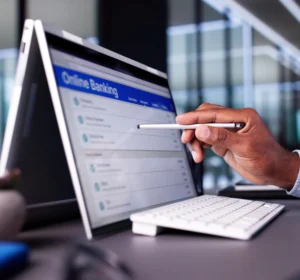A UCC lien gives a lender the legal right to seize certain assets if you default. This lien is added when you leverage collateral for a small business loan or other type of financing. The lien is filed when you sign the contract, and the contract specifies which assets are included.
UCC filings are statements in public records that are submitted to your Secretary of State. These are used to notify other third parties about the status of the lien and whether it is active, changed, or ended.
There are four types of UCC filings that matter for small businesses:
- UCC-1, also called a financing statement, is used to enter the lien into public record.
- UCC-3 is used to extend, amend, or terminate the lien.
- UCC-5 is used to publicly dispute or challenge a lien.
- UCC-11 is used to search for existing liens.
The process starts when you sign a business loan or financing contract. The lender files a UCC-1 statement describing the collateral and the terms of the debt so that future lenders know the collateral has an existing UCC lien on it.
From there, the other three types can come into the process (i.e., when you need to dispute a lien, when someone searches for liens, or when one needs to extend, amend, or end the lien). Once you have made the last payment on the loan, the lender should remove the lien. If they forget, you can always work to get it cleared.
UCC filings and liens are a standard part of taking a business loan and typically nothing to worry about. This guide covers why they’re used and how you can protect yourself by using proper collateral descriptions and making sure liens are terminated after you’ve paid off the debt.
Why and How UCC Filings and Liens Are Used
The purpose of UCC liens is to protect lenders from losing money if a borrower defaults on a debt. Lenders file a UCC-1 financing statement when you sign the debt contract because UCC filings document the lien in the official public record.
This tells other lenders and the court system about the lien to avoid confusion or misrepresentation if a borrower tries to use the same asset as collateral on another loan in the future. That’s also why lenders use UCC-11 filings to search for existing liens.
UCC-11 filings allow the lender to do an official search for existing liens on a given item of collateral. If a lender sees that the collateral is not currently leveraged with another lender, they will have more confidence in their ability to recoup potential losses by obtaining that asset. If multiple UCC filings exist and have the same collateral on them, the lender that filed first gets the first claim to the assets. Then, it progresses to the last filer.
If all of the assets are seized and sold before the last lender’s UCC filing is surfaced, the last lender to file their UCC lien gets nothing. Lenders might still allow the borrower to use the collateral if there’s an existing lien, but it’s a higher risk for the lender, so they’ll likely charge a higher interest rate, loan less money, or require additional collateral to lower their risk.
There is one exception to the order in which assets can be claimed. When the debt is being used to purchase a specific asset and the lender indicates a purchase money security interest (PMSI) on their UCC-1 statement, it means they get top priority even if another lender already had an existing claim on the company’s assets.
If you have UCC filings and liens in existence and need more financing, you’ll want to become familiar with the UCC-3. UCC-3 statements extend, amend, or end a UCC lien. Lenders use UCC-3 filings to extend their claim every five years, because their priority to be repaid if the borrower defaults expires every five years. UCC-3 filings can also amend existing claims by changing the description of collateral, assigning the claim to another third party, or releasing some but not all of the collateral.
After borrowers pay off the debt, lenders file a UCC-3 termination statement that releases their lien. This allows the borrower to use the collateral for another loan or sell the asset without needing a UCC-3 amendment.
Collateral Descriptions for UCC Liens and Filings
Collateral descriptions for UCC liens and filings list the assets a lender has a legal right to seize. Having the lender be more specific is better because it prevents confusion on what they can and cannot seize if you default on the loan.
The collateral description on a blanket lien is the most generic form because it gives the lender rights to all the borrower’s current and future assets, including future sales or accounts receivable. This doesn’t mean the lender can seize all of your assets if you only owe a little bit of money, but it does mean they can choose which asset to seize and sell until they recover the amount left on the loan. That’s why it is always better to use a lien that specifies the specific assets a lender can seize and sell.
Specific liens use unique identifiers like serial numbers or VINs (for companies with multiple pieces of machinery or vehicles). You can also have the blanket lien changed to specify model numbers, UPC numbers, or counts of items if inventory is part of the collateral. For example, “1,214 count of 2 in. x 4 in. x 8 ft. Maple S4S Board” is better than “maple lumber.” Similarly,“4,812 count of UPC-A 037000793373” is better than “bottles of body wash.”
Pro-tip: Add a “purchased on” date and/or “purchased from” date to the collateral description, especially if the collateral has an expiration date.
Existing UCC liens make it almost impossible to sell an asset, so having accurate and specific collateral descriptions prevents the situation where you’re blocked from selling an asset that you never intended to use as collateral.
Asset Sales with UCC Liens
It’s technically possible to sell assets with active UCC filings in public record, but most buyers won’t touch the deal because the UCC lien remains active after the sale. You could stop paying the debt and the buyer would have to give the assets to the lender. Since UCC liens can kill an asset sale, it’s important to protect yourself from UCC scams and fraud by checking public records often and fixing any issues you find.
When you’ve paid off a debt, clearing an asset to sell it is straightforward when the lender cooperates by filing a UCC-3 termination statement that releases the lien. If you still owe them money, they can use the UCC-3 lien to amend the collateral, releasing the assets you’re selling and adding other assets if needed.
Clearing UCC Liens
Lenders should automatically file a UCC-3 termination statement when you pay off your debt, but it doesn’t always happen. If you’re worried that they won’t do it on time, or they haven’t filed after you’ve already settled the debt, take these steps:
- Send them an authenticated demand letter. This gives them 20 days from the time they received it to terminate the UCC lien.
- If the lender hasn’t cleared the filing after 20 days, you can terminate it yourself by filing a UCC-3 statement with the Secretary of State where the lien is recorded.
- Lastly, do a search once a week or as often as you see fit and watch for it to be cleared.
UCC liens give lenders the legal claim to seize and sell an asset if a borrower defaults on a loan. UCC filings are the public records used to inform other lenders that the lien exists, and there are variations of the UCC filings that allow lenders to extend, amend, or end the lien.
SmallBusinessLoans does not provide tax, legal or accounting advice. This material has been prepared for informational purposes only. You should consult your own tax, legal and accounting advisors.
















